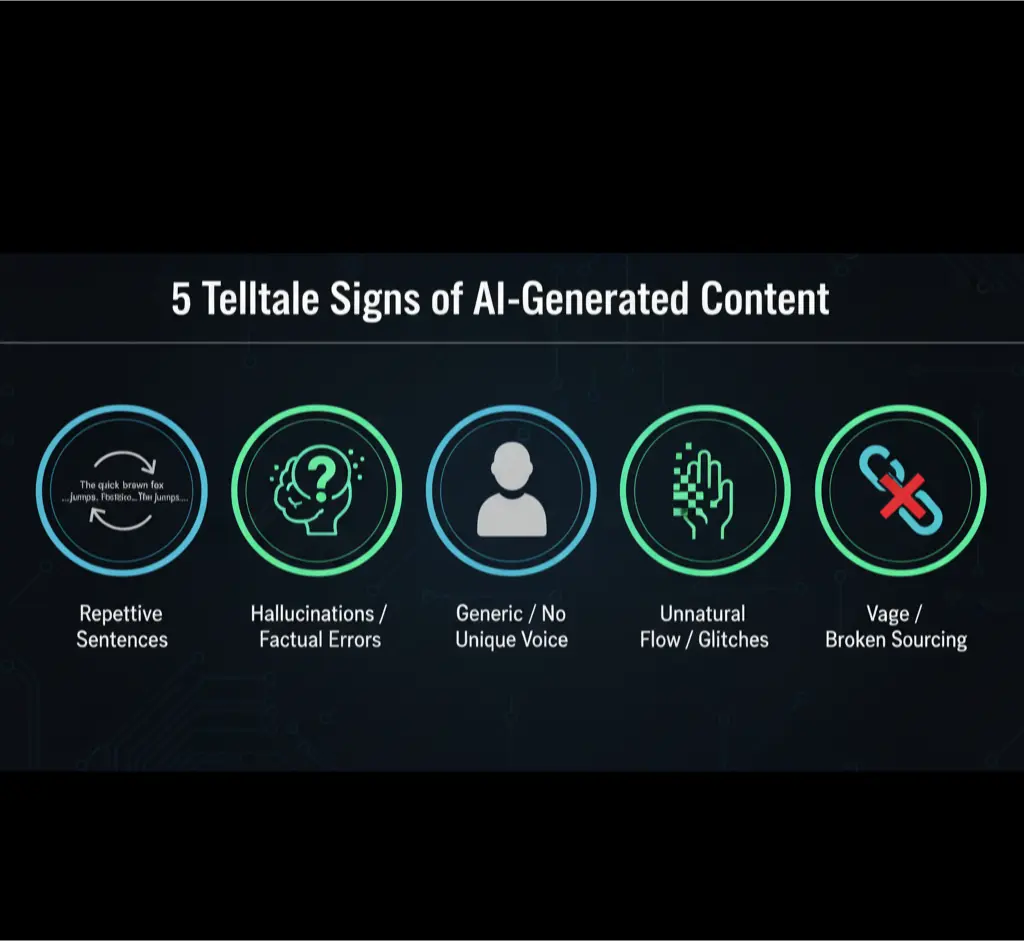You just read a fascinating article that perfectly explains a complex topic. It’s well-written, confident, and full of what seem to be credible facts. But something feels slightly… off. The tone is a little too perfect, the sentences a little too uniform.
You might be reading a piece of content that wasn’t written by a human at all.
In 2025, the internet is flooded with AI-generated content. While some of it is harmless marketing copy, a growing portion is designed to spread misinformation, create fake product reviews, or generate sophisticated phishing emails. A recent survey found that 77% of Chief Information Security Officers (CISOs) now consider AI-generated phishing their top threat. The ability to distinguish between human and AI writing is no longer just a neat party trick; it’s a critical skill for navigating the modern world.appypieautomate
As a digital content analyst who reviews thousands of articles a month, I’ve trained myself to spot the subtle tells of an AI author. This guide will teach you the same techniques, moving from simple red flags to the powerful tools the pros use.

The Human Eye Test: 5 Telltale Signs of AI Writing
Before you even think about using a tool, you can often spot AI content just by reading it critically. AI models have distinct patterns and weaknesses. Train your eye to look for these five things.
- Overly Perfect, Repetitive Sentence Structure:
- What to look for: Does every sentence start with a subject, followed by a verb, followed by an object? AI often falls into a monotonous, grammatically perfect rhythm. Human writing is messier; we use varied sentence lengths and structures. If it feels like you’re reading a textbook written by a robot, you probably are.
- The AI Tell: Look for an overuse of transition words like “Moreover,” “In addition,” “Furthermore,” and “In conclusion.”
- The Confident “Hallucination”:
- What to look for: AI models will state incorrect facts with absolute confidence. This is called “hallucination.” An AI might invent a historical date, a non-existent scientific study, or a fake quote.
- The Human Test: If a fact seems surprising or too good to be true, copy and paste it into a search engine. If you can’t find a credible, primary source that confirms it, you should be highly suspicious.
- Lack of Personal Voice and Anecdotes:
- What to look for: The article is all facts and no feeling. It lacks personal stories, opinions, humor, or any sense of a human being behind the words. AI struggles to create authentic, personal narratives.
- The AI Tell: The text might say “One might feel…” instead of “I feel…”. It often speaks in generalities rather than from specific, lived experience.
- The “Hand Problem” of Text:
- What to look for: Just as early AI image generators struggled to draw hands correctly, current AI text generators struggle with certain nuances. They often get idioms slightly wrong, use words in a technically correct but awkward context, or create lists that feel unnaturally balanced and symmetrical.gijn
- The Human Test: Does the language feel natural and lived-in, or does it feel like it was assembled from a dictionary?
- Vague Sourcing and Generalities:
- What to look for: The article makes big claims but offers vague sourcing like “studies show” or “experts say” without linking to the actual studies or naming the experts.
- The AI Tell: A human expert will typically cite their sources with specific links and references. An AI, especially an older model, will often make claims without providing any verifiable proof.

Level Up: Using AI to Fight AI
If the human eye test is inconclusive, it’s time to bring in technology. A new class of AI Content Detectors has emerged to help identify machine-written text. These tools analyze text for patterns that are invisible to the human eye, such as “perplexity” and “burstiness.”surferseo
- Perplexity: Measures how predictable the text is. Human writing is less predictable, while AI writing often chooses the most statistically likely next word, resulting in low perplexity.surferseo
- Burstiness: Measures the variation in sentence length and structure. Humans write in bursts of long and short sentences. AI tends to write sentences of a more uniform length.explodingtopics
Here is a quick rundown of the top tools available in 2025.
Top AI Detection Tools for 2025
| Tool Name | Best For | Key Feature / Limitation |
|---|---|---|
| Surfer AI Detector | Quick, free checks | High accuracy but can be fooled by heavy human editing. |
| Content at Scale | Bulk analysis (Pro) | Ideal for publishers scanning many articles at once. |
| Sapling AI Detector | Business/Education | Provides detailed reports and API access for workflows. |
| GLTR | Technical analysis | Free research tool that visualizes why text feels AI-like. |
It’s crucial to remember that no detection tool is 100% accurate. These tools are best used as a data point to support your own critical judgment, not as an infallible verdict.eastcentral
A Practical, Real-World Checklist
So, you’ve received a suspicious email or are reading a questionable news article. What do you do?
Your 60-Second AI Detection Checklist:
- Check the Author: Is there a named author? Does that author have a real, verifiable digital footprint (e.g., a LinkedIn profile, a history of other publications)? If the author is generic or non-existent, be suspicious.
- Scan for the “Tells”: Quickly read a few paragraphs. Does the writing feel robotic, repetitive, or strangely perfect? Are there any facts that seem off?
- Verify One Fact: Pick one specific data point or claim from the article and search for it. Can you find a primary source (like a research paper, official government site, or reputable news organization) that confirms it?
- Run it Through a Detector: Copy a few paragraphs and paste them into a free tool like Surfer’s AI Detector. Does it flag the content as likely AI-generated?
- Assess the “Why”: Ask yourself: what is the purpose of this content? Is it trying to inform me, or is it trying to get me to click a link, buy a product, or believe something without evidence? Content with a clear manipulative intent is often a prime candidate for low-quality AI generation.
Conclusion: The Future is Human + AI
AI-generated content is not inherently bad. It’s a powerful tool that can be used for good (like summarizing complex research) or for bad (like creating fake news). The challenge for us as readers is not to fear it, but to develop a new form of digital literacy.
The goal isn’t to perfectly identify every single piece of AI content. The goal is to build a strong internal “BS detector.” By combining your own critical thinking with the power of modern detection tools, you can navigate the modern internet with confidence.
Start practicing today. The next time you read an article, don’t just consume it—analyze it. Look for the patterns. Question the sources. In the age of AI, the most important skill is not just reading, but reading with intention.


